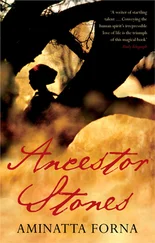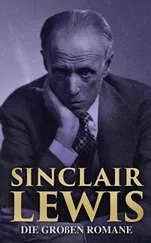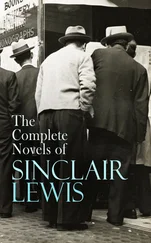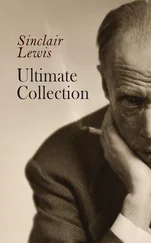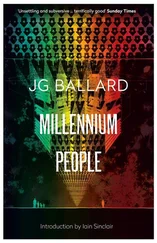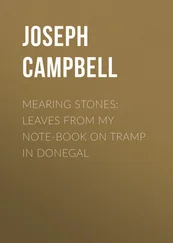It’s quite a spooky thing to stand in the great empty ice-box of Seed’s studio, and to find your exit barred by canvas windows: a monstrous facsimile of the Queen Elizabeth II Bridge, a slapdash account of three tower blocks on the road to Dagenham. These flats have been, on my successive visits, purple, scarlet, Chinese gold and the silver-pink of something in a foil carton waiting for the kiss of life. Locked away in this Hackney warehouse are all the missing parts of the jigsaw. Jimmy Seed’s privatised subterranea is the true Museum of London: piss-stain yellows, bruised blues, the grievous harm of jealous ownership. Jimmy wants it all, a comprehensive list of the city’s mysteries, its unrecorded and unloved margins. The official topography, energies stolen and exploited, is bleaker than ever. More abandoned. Seed doesn’t paint people because their time is done. He anticipates the coming age of restlessness, boredom and terror.
The wonder of Seed’s current work is how he discovers and defines borders, roadside memorials, ways out (of his own dilemma). Mare Street Snooker Centre and Mare Street Top Rank are imposing facades, more considered, more themselves, than the buildings which have now been demolished. Sentiment, loss of heat and sweat and civic argument, spit and smoke, is displaced into arrangements of texture, low-key virtuoso tricks to re-access memory. The precise lettering. The little green man on the pedestrian indicator who stands, Lowry-like, for all those earlier Seedian gargoyles, Ensor masks of the canals and street-markets.
The large-scale depictions of Hackney and the A13 are properties: in the film sense. They come with unreliable narratives (the story of their composition). What goes on behind the canvas is none of our business. Set against information overload, the multi-channel digital noise of Mare Street (Kurdish, Vietnamese, Jamaican, Irish, Jewish, Cypriot, Afghan), Jimmy’s cool minimalism is perverse. The story doesn’t stop where he leaves it. It spills onto the floor, out of the window. Gunfire, siren, road drill. It’s not the artist’s business to deal in social comment. No sermons, no history. Jimmy’s stance, so he says, is ‘deadpan’. Literally so: the panoramic shot of the vanished liberal-leftist documentary film-maker frozen in its tracks. Stopped dead . The city, once revived by waves of immigration, is finished. So Seed proclaims. Get in the Volvo, move on. ‘I think of the sea, always,’ he says. ‘Waiting behind those brick cliffs.’ The pull is in one direction: towards the rising sun. A13 and out. Like a Victorian explorer, hacking through the jungle, he is searching for one last colony to exploit.
There’s nothing better, Jimmy asserts, than to hit the road. Early and often. Into the unknown. One jump ahead of the politicians and hole-diggers, destroyers of memory. From his days motorbike-scrambling on Beckton Alp, he learnt to love the junky inconsequence of the A13: industry, enterprise, mutation. Old poisons colouring present neglect. He operates like a resurrection man, bringing landfill back to life. The Essex paintings catalogue this debris: a burger shack, a drinking den, a discontinued filling station, the car park of a hypermarket under an enormous and agitated sky. The toxic gaudy of a culture of transition. These works have a morbid fascination. We feel for them as our great-grandfathers felt for impressions brought back by Roberts from the Holy Land. A landscape of myths and dreams fallen into decline. Seed deals in trophies — like giant Polaroids — produced for Bishopsgate aesthetes, masters of the commodity market who no longer have the leisure to travel. But who have wall space to dress in Spitalfields and Shoreditch. Better to own a Seed than to look out of your window. As you stroll through the atria of the temples of finance, shadowed by gently panning CCTV cameras, you will be close to a Seed — without realising it. Hung as an element in an architectural scheme, beside the escalator, overseeing the receptionist’s desk, the huge paintings are blots of noise. New London, global stopover, treats the old, dirty, lost London as an abstraction. We aspire to the condition of a club-class departure lounge, with low-intensity/high-definition art as a palliative, something to take our minds from the horrors of flight. Artists like Seed can do the travelling for us.
The A13, as revealed in Seed’s paintings, isn’t London. And it isn’t anywhere else. Moving out, riding the fairground humps of the arterial highway, catching glimpses of retail weirdness in your wing mirrors, is to submerge yourself in a pill-popper’s vision of New Jersey: McDonald’s, Warner’s, Ford’s. Hungry apostrophes and empty paddocks — like deserted airfields, where unsold cars (Seed would specify the brand, year of manufacture, engine capacity) once waited to be shipped out, by rail or down the Thames. To the world market.
By shaping his work so remorselessly in landscape format, Jimmy Seed delivers something like the curved view through the windshield of an American gas-guzzler. It’s easy to read his recent paintings as an extension of the credit sequence of The Sopranos , mid-Atlantic reverie. Compositions stacked in three bands: road, obstruction, sky. ‘Tuesdays’, the Basildon club, is the perfect signifier: imported Scorsese, melting around the edges, impregnated with burger smoke. A punishment block in which (unseen) Essex heavies practise the body language they acquired by watching bad TV in prison. Seed loves Tuesdays, the calligraphy, the nakedness of the plaster, the black-slat blinds. ‘Nobody in London, in this day and age, would try and get away with those,’ he says. ‘That’s style, baby.’
To cope with such retinal blight, artists have to reinvent themselves as businessmen. Of the Basildon type. The sharper operators cosy up to developers and architects who don’t wear ties. The big cheeses, Bacon, Freud, Auerbach, are not only the painters whose work commands a premium in the saleroom, they are the ones who copyright a mystique: an art that is better than money. The kind of lavishly framed painterly display that can — if stolen — underwrite a drug deal.
Seed, a sensible man, juggles his property portfolio. A flat here against a farmhouse there. An old garage, abandoned by villains, in which to operate — in which to store the back catalogue. We live in an age of remote-controlled security shields, barriers that curl up on themselves at the touch of a button. Private worlds, secret spaces, hidden behind a frontage of dying commercialism. Standing in the nether reaches of Roman Road, lacking the magical device with which to gain entry to one of Seed’s studios, I realised why those huge canvases were so provocative. They were, without disguise, doubles of the coloured photographs in the estate agent’s window. Right alongside the door of Seed’s warehouse are the premises of Naz Ringblatt Property Services. Naz’s big punt was an image of ‘Hollywood Lofts’, a ‘1930s cinema complex’ on Commercial Street. ‘Penthouses from £1650 P/W. Gates to Garage Electronically Controlled. One-minute walk to Spitalfields’ Famous Market’ The computer-enhanced promo snap, all redundant detail eliminated, gave off the same rush I get from confronting, unexpectedly, one of Jimmy Seed’s austere A13 panoramas. It’s hard to draw breath in the gap between nostalgia and exploitation. But it’s as good a place as any to work out the price of behaving with 19th-century diligence in a fast-twitch electronic multiverse.
Don’t believe I waded through this bilge while I waited for the optician to get off the phone. I skimmed. Taking in just enough to infuriate me. Some person had nicked my file and submitted the aborted Seed piece under a version — A.M. Norton — of my name. I slid the magazine beneath my coat, to take it back to the flat. I wanted to check Norton’s text against the carbon copy that I had preserved, with all other duplicates, against the day when I ran out of fresh material. When I was too knackered to walk, lift a camera, or try a new town.
Читать дальше




